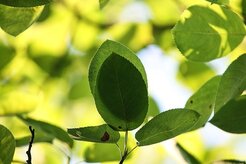
The key to successful landscape shading is careful planning. You will need to plan out the exact location the trees should be planted so as to provide the right shade at the right time of day. Another very important aspect is what kind of trees to use. If you are looking for a lot of shade, you will require a denser tree. You also want to think about whether you need shade all year round or whether you want the warming effects of the sun in the winter. If you do then deciduous trees are best as they provide full shade in the summer and then lose their leaves to allow sunlight in the winter.
Another option that will see more rapid results are vines. Wrapped around a lattice or fencing they will not only shade an area but also allow a much-needed breeze to pass through the vines. To shade pathways or driveways, shrubs are another choice to consider.
So, there are many advantages to landscape shading but it’s also good to be aware that it may take some time before you see any obvious savings due to the cost of the trees etc. You also need to check that planting extra trees will not adversely affect moisture levels on your property which can create other problems.

 RSS Feed
RSS Feed